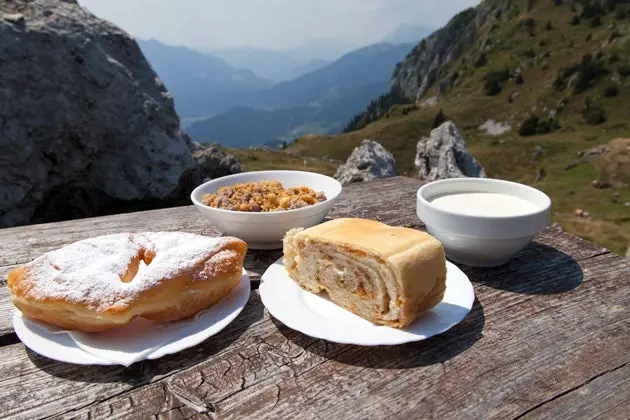
Dictionary to understand any Slovenian menu
The Habsburgs and Napoleon left some pouts when they occupied the nation, and being so close to Italy, some pasta stuck, in this pan where Mediterranean tastes are slowly simmered with ingredients from the Julian Alps and Balkan aromas. We have prepared a tasting menu for you. dober tek! (Take advantage!)
FIRST
Cheese and sausage board
Trnic . They say it's pear-shaped, but it's clearly a cream-and-cottage-based nipple. The shepherds of Velika planina decorated them to give them to their fiancees as proof of loyalty and love ; Always, of course, two by two.
Tolminc . This is one of the forts. It was already made, as far as is known, in the 13th century. Back then, it was the only way they had to preserve the milk , and for herders in Posočje it served as payment currency for landowners.
Bohinjski mohant . A Bohinj cheese specialty , in full Triglav National Park . It has a spicy flavor, somewhat bitter at the end; in summer it takes six weeks to mature, but in the cold of the Julian Alps, in winter it takes three months or more.
nanoski . A little further and this gualdo cheese from Mount Nanos It is Italian. The cows that graze in its meadows are very close to the border; in an hour they arrive in Trieste by road.
Bovski. Yes it is a real Bovec cheese , it will be made with the milk of one of those sheep that graze bucolic next to the streams of the Soča Valley. It is intense, aromatic and slightly tart.
Zgornjesavinjski želodec . Kind of salami made with guts of VIP pigs who have the privilege of living on farms with views of the alpine peaks, in the Savinja Valley . Its curing process is somewhat arduous, which is why in the past this sausage was a luxury that not everyone could afford; nowadays it is eaten more often, and every year the best sausages compete in a contest in Rečica ob Savinji.
Kraški pršut. Or what is the same: Serrano ham cured with the lashes of a more than fresh wind , the bora, famous for slapping the people of the Adriatic Sea and the Carso (there are places in Slovenia where they even have to hold the roof tiles of the houses with stones!) .
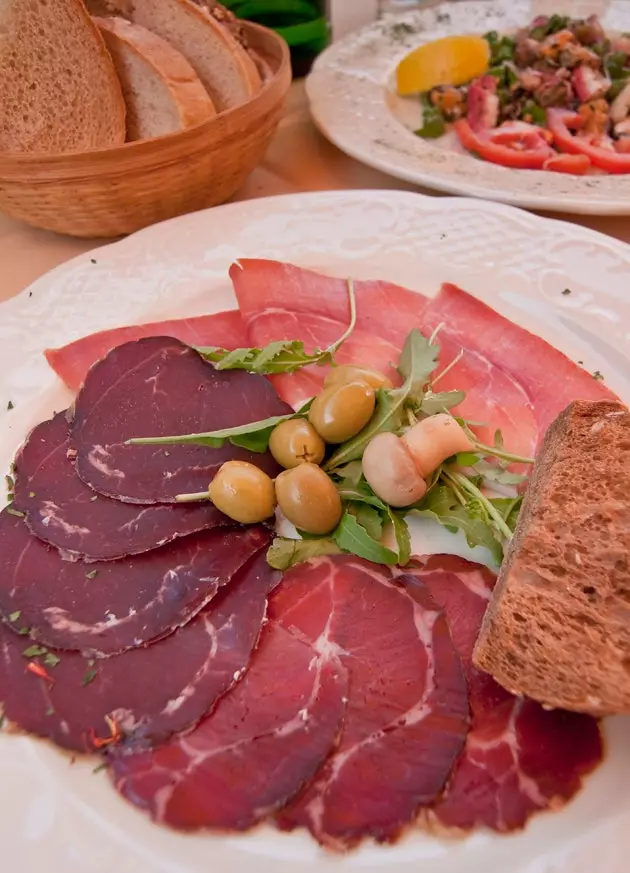
Slovenian charcuterie board
SECONDS
the obligated
Kranjska klobasa . Seen from afar it would look like a simple smoked sausage, but appearances are deceiving. It comes from the Carniola region and is made according to the traditional recipe of Sister Felicita Kalinšek , dating from 1912. This is: high quality pork and bacon seasoned with pepper and garlic ; it is not passed through the pan: it is boiled in hot water and put directly on the plate; in the past it was served with mustard and horseradish, sauerkraut or turnips , but if we feel like it, we can also make a hot dog with it. It is, without a doubt, the most famous dish in Slovenia and it does not stop crossing borders: they know it in the United States, Canada, Argentina, New Zealand, Australia... and also in space! since astronaut Sunita Williams took one of these galactic tupperware sausages.
Pražen krompir. This food arouses passions in Slovenia, especially among militants of the “Society for the recognition of sautéed potatoes with onions as an independent dish” . His claim is blunt: potatoes are not mere companions, and less so in this recipe that, as simple as it may seem (boil a potato and fry it), takes almost an hour and a half to prepare. The best time to taste it is during the International Potato Festival , where potatoes are cooked, potatoes are eaten, potatoes are talked about and a hymn is sung to the potato. Such devotion began when Maria Theresa I of Austria decreed that Slovenian farmers in the 18th century cultivate this tuber. It was the beginning of a new era for the country: famines were over and they even had potatoes left over to sell to Germany. The main export center was Šencur, better known in the Holy Roman Empire as Kartoffeldorf (city-potato). The delicatessen has a monument in the town, what less!
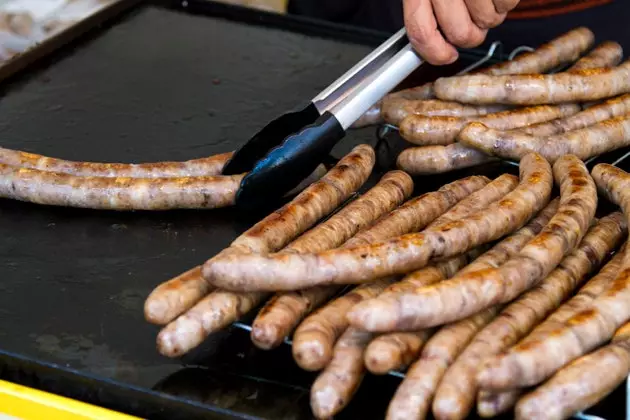
Kranjska klobasa
Struklji. It is the dish with the most good vibes in Slovenia : each region fills the dough with whatever they want; sweet version, with plums or apples; or salty, with fresh cheese, walnuts, poppy seeds, potatoes... or with tarragon, the classic, which is the first recipe written in 1589. Then it was only eaten at the feasts to keep; but now… You only live two days, what the heck!
Žganci. “If you eat žganci, when you grow up you will be big and strong!” With these they try to persuade Slovenian children to finish this dish made with barley, wheat, buckwheat or corn flour, cooked over low heat with water and salt. The result is a mass as unattractive as it is handy : it is taken for breakfast, mixed with yogurt, honey or milk; at lunch, to keep company with a steak, or reheated for dinner if we're too lazy to put on our aprons.
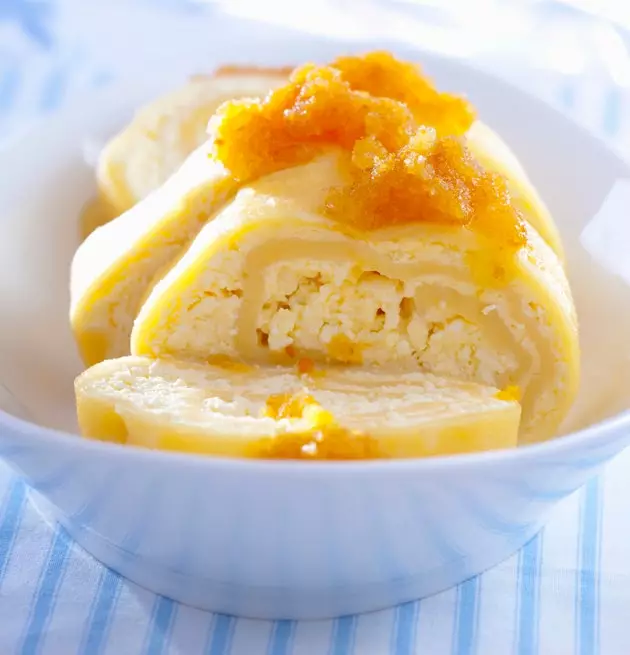
Štruklji, the most convoluted dish in the country
FROM POT TO PLATE
Bograc. A stew of those consistent. It is very similar to Hungarian goulash; it is more, I would dare to say that it is the same; but it gets its name from the saucepan where all the ingredients are cooked: veal, pork and hare meat; tomatoes, potatoes, spices… And if it's season mushrooms . There is a contest that awards the best bograč in Slovenia every year.
Ricet. Considered the national stew, this thick soup is a barley porridge with white beans and pieces of smoked meat. In a refined version, pears and dried plums are added; in a more austere one, it is offered on the daily menu in Slovenian prisons.
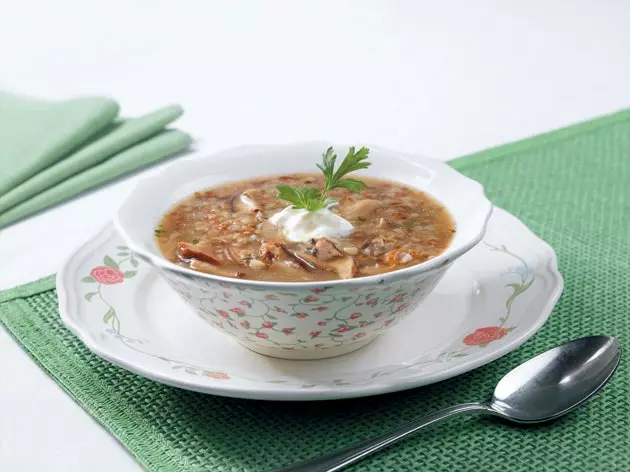
Bogra?, pride of national stew
AL DENTE
Žlinkrofi. A ravioli stuffed with potato, onion, herbs, spices and lard or bacon, served with bakalka (a lamb or rabbit sauce) and sprinkled with breadcrumbs. They say that Slovenians consume fifty tons a year! Anyone would say that they copied the recipe from the Italians, but everything indicates that it was brought by a family of German (or Transylvanian?) miners who worked in Idrija, a town declared a World Heritage Site , not for the pasta (which could also) but for its ancient mercury mine, discovered five centuries ago.
We find many other ravioli in Slovenia with fillings for all tastes: the kozjanski krapi, with cottage cheese and millet; the Rateški kocovi krapi , with potato and pieces of dry pear, honey and cinnamon; the Rateški špresovi krapi , with fresh cheese, onion, eggs and polenta, etc.
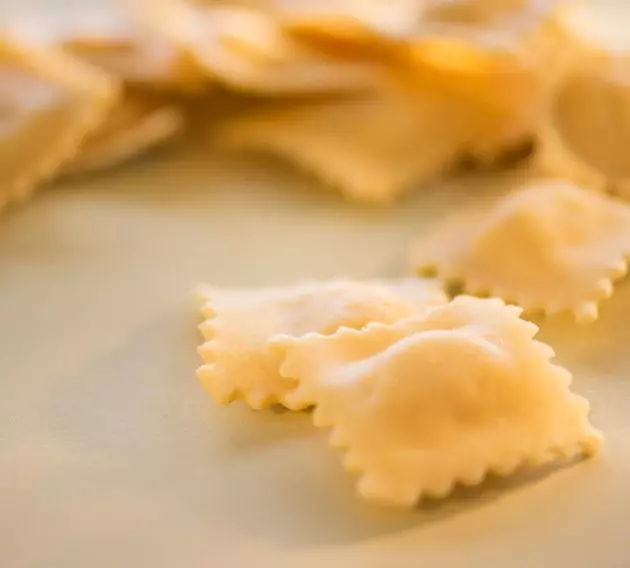
Žlinkrofi, pure Italian influence
FOR DESSERT
Prekmurska gibanica. Although this cake originates from Prekmurje, it is prepared just as well anywhere, since we are talking about a cake protected with the seal of Traditional Specialty Guaranteed . In other words, pastry chefs have to follow the recipe to the letter (innovation on their own is prohibited) and fill layers with apples, ricotta, poppy seeds, walnuts and raisins.
Kremšnite. It is the typical sweet of Bled, which rivals the city's castle and lake in popularity. It was created by a Serbian confectioner in 1953, when he was working in the confectionery of The Park Hotel . Today, they organize guided tours of the kitchen to see how the pastry chefs prepare this cake based on cream and vanilla cream.
Ljubljana cake. The best of the country is concentrated in this cake: buckwheat flour, honey, almonds, chestnuts, pumpkin seeds, figs... and a chocolate coating that makes it look like a Sacher. They say that a chef from the capital prepared the recipe to cheer up the depressed daughter of the lord of the castle (it is not necessary to remember the properties of chocolate in this sense); but it's all tourist marketing: the cake was actually conceived in 2012, when the only gentleman left in Ljubljana castle is the one that disguises itself as Frederick III of Habsburg on guided tours.
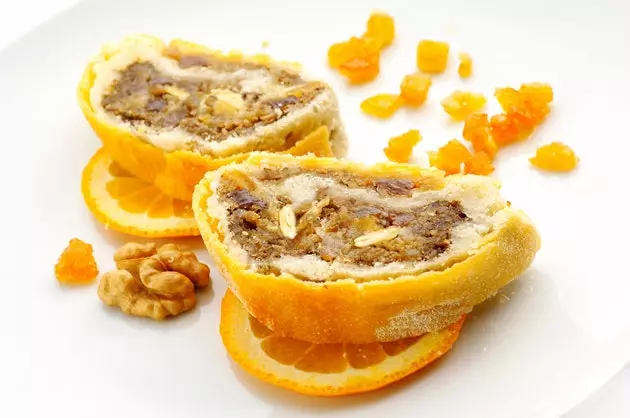
No one can betray your magic recipe
BREAD AND DRINK INCLUDED
Belokranjska Pogača. Flat bread reticulated with salt and cumin seeds. It is cut into squares of about four centimeters and if it is served hot it is tastier.
Dražgoški kruhki . Gingerbread and honey buns; There are round, star-shaped, crescent-shaped, heart-shaped... according to the inspiration of the master craftsman who decorates the bread before baking it.
Vrtanek. Braided sweet bread that was previously only kneaded to celebrate that the farmers had finished their work in the field. Needless to say, it is no longer necessary to start mowing to taste it.
Something a little simpler: Kruh z oljkami or figov kruh ; I translate: bread stuffed with olives or figs.
For brewers: A Lasko , the national beer of Slovenia. It has been around since 1825 and was founded by a guy who baked gingerbread and produced mead. That's having a commercial vision, because today their pivo (that's what they call the lager there) can be found in every bar in the country.
For sommeliers: A glass (or two) of Zametovka . It's not that I know much about wine, but this one has the fame of growing on the oldest vines in the world, that's why they always give it to emperors, presidents and popes. The grapes in question are grown in Maribor, where the Wine Festival is held throughout the month of October. . They have two statues of the god of wine, a wine museum, a wine route, many wine taverns… And the Slovenians say that you get drunk just by drinking the city air.
Na zdravje! (To your health!)
*** You may also be interested in...**
- A legendary trek through Slovenia: the Julian Alps
- The ten most beautiful villages in Slovenia
- Where is the most beautiful river in the world?
- Everything you need to know about mountain destinations
